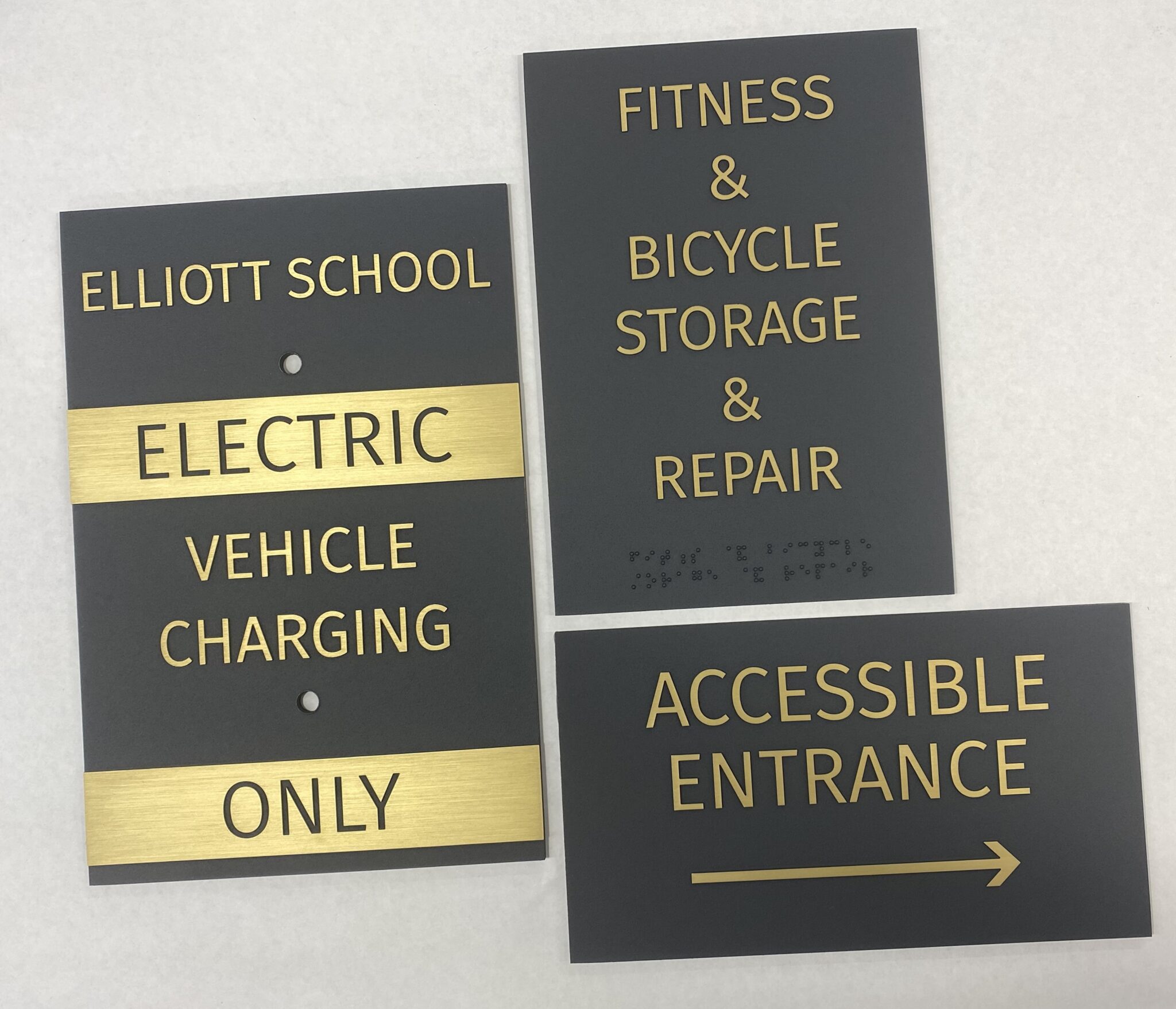ADA Signs: Crucial Tools for Inclusive Environments
ADA Signs: Crucial Tools for Inclusive Environments
Blog Article
Exploring the Secret Functions of ADA Signs for Enhanced Accessibility
In the realm of accessibility, ADA indicators serve as quiet yet effective allies, ensuring that rooms are inclusive and navigable for individuals with impairments. By integrating Braille and tactile aspects, these indicators damage barriers for the aesthetically damaged, while high-contrast color schemes and understandable fonts provide to varied aesthetic requirements.
Value of ADA Conformity
Ensuring compliance with the Americans with Disabilities Act (ADA) is important for fostering inclusivity and equivalent accessibility in public rooms and offices. The ADA, passed in 1990, mandates that all public centers, employers, and transport solutions fit individuals with handicaps, guaranteeing they take pleasure in the very same civil liberties and opportunities as others. Conformity with ADA requirements not only meets lawful commitments but also boosts a company's track record by showing its dedication to variety and inclusivity.
One of the vital elements of ADA compliance is the application of easily accessible signage. ADA signs are designed to guarantee that people with disabilities can quickly browse via spaces and structures.
In addition, adhering to ADA policies can reduce the risk of possible fines and lawful repercussions. Organizations that stop working to adhere to ADA guidelines might encounter charges or lawsuits, which can be both harmful and economically troublesome to their public photo. Therefore, ADA conformity is integral to fostering a fair setting for every person.
Braille and Tactile Aspects
The unification of Braille and responsive components into ADA signs personifies the principles of availability and inclusivity. It is generally put beneath the matching text on signs to ensure that people can access the info without visual assistance.
Tactile elements expand beyond Braille and consist of increased signs and personalities. These elements are created to be noticeable by touch, allowing individuals to determine room numbers, washrooms, departures, and other essential locations. The ADA sets particular standards concerning the dimension, spacing, and positioning of these tactile aspects to enhance readability and ensure consistency across different environments.

High-Contrast Color Design
High-contrast color plans play a crucial duty in boosting the presence and readability of ADA signs for individuals with visual disabilities. These systems are crucial as they optimize the difference in light reflectance in between text and history, guaranteeing that indicators are conveniently discernible, even from a range. The Americans with Disabilities Act (ADA) mandates using details color contrasts to fit those with limited vision, making it an essential facet of conformity.
The effectiveness of high-contrast colors hinges on their ability to stand apart in various illumination conditions, including poorly lit atmospheres and areas with glow. Generally, dark message on a light history or light message on a dark background is utilized to attain ideal contrast. For example, black message on a white or yellow history gives a plain visual difference that assists in quick acknowledgment and comprehension.

Legible Fonts and Text Dimension
When considering the style of ADA signage, the option of readable font styles and ideal text dimension can not be overemphasized. The Americans with Disabilities Act (ADA) mandates that font styles should be not italic and sans-serif, oblique, script, highly ornamental, or of uncommon type.
The size of the text likewise plays an essential function in ease of access. According to ADA standards, the minimum text elevation need to be 5/8 inch, and it ought to anonymous increase proportionally with seeing distance. This is specifically crucial in public rooms where signage demands to be reviewed quickly and accurately. Uniformity in click here for more message size adds to a cohesive visual experience, aiding individuals in navigating settings effectively.
Additionally, spacing between lines and letters is indispensable to clarity. Ample spacing avoids personalities from showing up crowded, boosting readability. By sticking to these criteria, designers can dramatically improve ease of access, making certain that signs serves its intended purpose for all people, despite their aesthetic capacities.
Reliable Placement Approaches
Strategic positioning of ADA signage is vital for optimizing availability and making sure conformity with lawful requirements. ADA guidelines state that indications ought to be installed at a height between 48 to 60 inches from the ground to ensure they are within the line of view for both standing and seated people.
In addition, indicators need to be placed surrounding to the lock side of doors to allow easy identification prior to entry. Uniformity in sign positioning throughout a center boosts predictability, lowering complication and improving total user experience.

Conclusion
ADA indicators play a crucial function in advertising ease of access by integrating features that deal with the demands of individuals with disabilities. Including Braille and responsive aspects ensures important info is obtainable to the visually damaged, while high-contrast color plans and legible sans-serif fonts boost exposure throughout numerous lighting problems. Effective positioning techniques, such as suitable mounting heights and strategic places, better help with navigating. These components jointly foster an inclusive setting, highlighting the significance of ADA compliance in making certain equal access for all.
In the realm of accessibility, ADA indications offer as silent yet effective allies, making certain that rooms are comprehensive and accessible for people with specials needs. The ADA, established in 1990, mandates that all public centers, companies, and transport services suit individuals with disabilities, ensuring they enjoy the very same legal rights and opportunities as Source others. ADA Signs. ADA signs are made to make sure that people with handicaps can quickly browse with spaces and structures. ADA standards stipulate that signs need to be installed at a height in between 48 to 60 inches from the ground to guarantee they are within the line of view for both standing and seated individuals.ADA indicators play an essential function in advertising availability by integrating features that attend to the demands of individuals with specials needs
Report this page